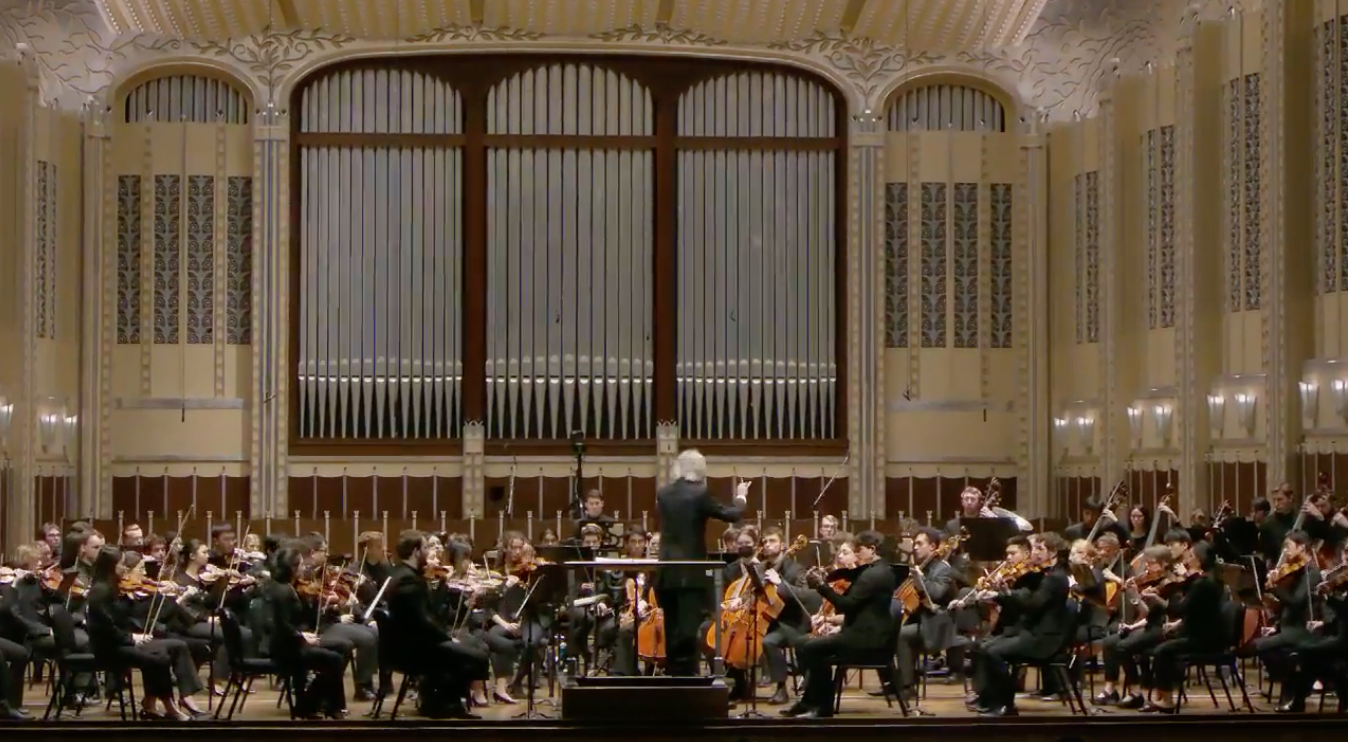by Stephanie Manning

Though the two composers on the program, Messiaen and Bruckner, were likely familiar to the audience, the pieces chosen were potentially less so. In the absence of written program notes, commentary was given from the stage (and with good humor) from violist Pablo Ronderos. Messiaen’s L’Ascension is “meditative, pensive, and prayer-like,” though not without the characteristic dissonances of the French composer. The early-career work, rooted in Messiaen’s Catholic faith, tells the story of Jesus’ ascent into heaven over four disparate movements.
The opening movement, celebratory yet mysterious, features just the winds and brass. Although some entrances were a little muddled, the balance in the held chords was nice and full. The full orchestra comes together only in the third movement, which felt the most settled and confident in the face of countless interlocking parts. Kalmar appeared an exacting conductor, his movements large and angular, which was most helpful in complicated movements like this one.
However, perhaps the slower movements could have used some more room to breathe. The strings-only meditation for the last nine minutes of the piece exemplified the group’s unified sound, but would have benefited from a more cohesive musical direction. The second movement came across in a similar way, but was accentuated by some memorable wind solos, especially the warm tone of Caroline Wu on English horn.
Like Messiaen, Bruckner was a deeply religious man, a characteristic that extended into his work. The Austrian composer’s Symphony No. 4, however, is more secular while still maintaining his characteristic qualities. Subtitled “Romantic,” after the 19th-century artistic movement, the work tells stories of brave knights, great feasts, and fair maidens. The orchestra ensured all the big moments swelled with energy, particularly in the repeated themes of the opening and closing movements. In the finale, the most dramatic moments conjured images of ships tossed about by a storm, the bass’ strings rattling vigorously.
This work is unquestionably a feature for the brass, specifically the horn section. Even if a few cracked partials occasionally distracted from listening experience, all five players performed admirably. The unison fanfare for the section at the end of the first movement was triumphant and nicely in tune. Principal horn Layan Atieh impressed with her frequent solos, particularly the crisp hunting call at the beginning of the Scherzo.
Clocking at about an hour and ten minutes, the symphony is bound to have its share of lulls in addition to its high points. However, Kalmar and the students brought an undeniable focus to their performance, worthy of tackling challenging works like these. And the two-hour concert ended on a high note — unlike L’Ascension, Bruckner 4 resolves in triumph.
Published on ClevelandClassical.com December 1, 2022.
Click here for a printable copy of this article



